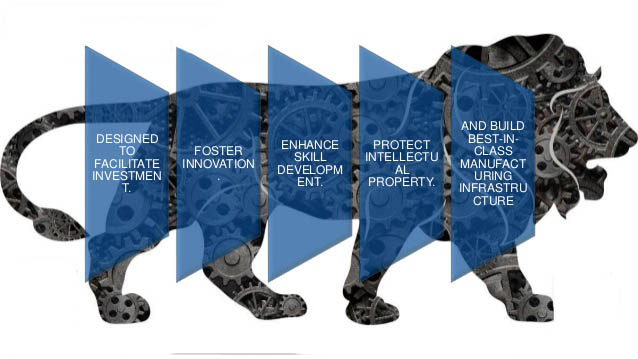“From electrical to electronics, come ‘Make in India’. From chemicals to pharma, come make in India, from auto to value-addition, come make in India. Paper or plastic, come make in India. Satellites or submarines, come make in India.”
With these stirring words, spoken in his inaugural Independence Day Address in 2014, Prime Minster Narendra Modi had heralded the launch of the ambitious ‘Make in India’ campaign.

This was followed by considerable activity on the legislative front, with FDI caps being removed or relaxed across a number of sectors related to manufacturing and of an employment-generating nature such as automobiles, aviation manufacturing, construction, Oil & Gas and pharmaceuticals, among others. Promotional activities were also put forth on a large scale, and slickly-produced road-shows followed the Prime Minister on his foreign tours.
In the surfeit of media and information related to the campaign, what we need to get a grip on is what we, as young Indians, can do to contribute to this admirable initiative.
Just like the Swachh Bharat mission, Make in India too, is a joint responsibility of the government and the citizens. It would not be wrong to say that the Make in India campaign is something that will most benefit and can be contributed to, by entrepreneurs. It is the brave young risk-takers of the country in whom the future prosperity of India is vested, and it is up to them to take the steps for making it a success.
For those who are setting up plants and factories, an excellent way to contribute to this campaign would be to source your raw materials from within India to the extent possible. While a certain amount of capital goods might necessarily have to be imported, raw materials are often possible to procure just as easily domestically. Where possible, it makes more sense to use foreign technical knowhow and manufacture on Indian soil rather than to import goods from abroad directly. In the long run, not only will this reduce dependence on overseas suppliers, which is subject to political risk, but also reduces your exposure to foreign exchange risk.
Another way to look at this for those who are not entrepreneurs, but professionals or students, is to follow the lead set by companies that are already taking advantage of this scheme to invest in India.
As we had covered in an earlier article, companies like Spice Telecom, Samsung, Huawei, Foxconn and Lenovo have invested millions and set up facilities across India, from Noida to Andhra Pradesh. More companies are investing in setting up facilities in India, in sectors ranging from power ancillaries, aircraft manufacturing to a conglomerate like GE. This represents a chance to shape your skills, or re-skill yourself, and grab the opportunities this affords. It would contribute both to the success of this ambitious campaign, as well as your own pursuit of career goals and success.
A young entrepreneur’s focus should necessarily be on the long term. Making money is often easy, sustaining a regular cash flow is much more difficult. ‘Make in India’ is an admirable initiative that seeks to put Indian manufacturing at the forefront. As the youth of India, it is our responsibility to rise to the challenge and prove to a doubting world that ‘Made in India’ is a tag that can compete with the aura and assurance of ‘Made in Japan’ and ‘Made in Germany’.
For the professionals and educated classes, ‘Make in India’ represents an opportunity to hone our skills and present to the world the face of a new India that is confident, talented and able to meet the challenges set forth before it by the government, wiping out the colonial-era image of a starving third-world country.
Image source : https://image.slidesharecdn.com/cseagroup22-141118131326-conversion-gate01/95/make-in-india-4-638.jpg
































Not just on the front of ‘Make In India’ but any government program is ought to fail until the people choose to make it happen! An old saying establishes the importance of both the hands for a handshake to reach climax. I will derive inference from this and urge people to go for it! We used to worry about nation and looked for a platform, now here is one. Make the best of the opportunity to help the nation win!
One thing that must be understood by all of us is that alone PM can not do anything. If not, everyone then, at least, some initiation must be done by a group. This is what Indian youth can do. Make in India is not just a government launched initiative rather an initiative that must be considered to be of the people, for the people and by the people. We must consider it as an opportunity to produce in India. Be it a new startup or taking up a new job but, in India. This way, we are helping indigenous manpower to produce indigenous technology.